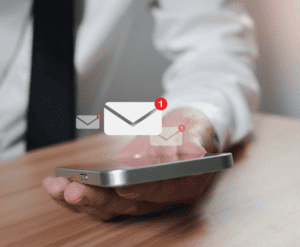Small business owners, irrespective of their industry, often underestimate the impact of email marketing. Not only is email marketing beneficial for fostering customer relationships, but it’s also a great way of reaching and fortifying their brand. Contrary to common misconceptions about its effectiveness and cost, the truth is that it’s a great tool for driving conversions and growth.

The findings of a study revealed a profound impact of Internet development on businesses. The study suggests increasing Internet user numbers and penetration rates across Slovakia, the Czech Republic, Austria, Hungary, Poland, and the European Union, as of November 30, 2015. The data further highlighted a consequential rise in e-commerce, with an annual growth in the percentage of Internet users engaging in online purchases from 2011 to 2015.
Several other studies also suggest that the rise of digital and email marketing led to a significant shift in consumer behavior at both national and international levels. As per Hubspot, with a staggering 4 billion daily email users, email marketing remains a powerhouse in digital communication. Moreover, 37% of brands are expanding their email budget, and a significant portion of marketers integrate mobile-friendly emails into their strategies.
The key metrics
Whether communicating information or driving sales, companies often integrate email campaigns to boost website traffic and revenue. Key to a successful email marketing strategy are crucial metrics such as Delivery Rate, Open Rate, and Clickthrough Rate, essential benchmarks for gauging campaign effectiveness
What do businesses need to do?
So, as a business owner, what should be your strategy?
The initial focus should be on building a targeted database through internet research, crafting compelling emails for increased response rates, and employing personalized messaging rather than bulk mail. This is especially helpful in having a comprehensive company database at hand and also allowing for precise control and timing of email campaigns.
Amy Hage, Co-Founder at Strategy Maven Agency believes the very first step is to segment your customers. She explains,
“Segmentation is key. Too often, I see people just sending to their Master list but in order to have a healthy list and subscriber base- you need to segment them by where they are in your customer journey and what their past behavior and interests have been. The quicker you do this, the faster the conversion.”
The effectiveness of segmentation is evident, as segmented emails drive 30% more opens and 50% more clickthroughs than their unsegmented counterparts. While the majority of marketers send 2-3 emails per day, 12% opt for a weekly approach. Impressively, 77% of marketers report increased email engagement over the past 12 months, emphasizing the enduring relevance of email as a preferred communication channel for smartphone users.
Create a lead magnet
When you are crafting your emails, you also need to work on a lead magnet that could potentially interest a buyer.
For example, create a lead magnet titled “How I Crossed 6 Figures with YouTube Ads.” The use of numbers in the lead magnet would encourage and intrigue the customer or lead to click on your content. Moreover, lead magnets such as these are bound to attract prospects who want to see similar results for their business. The magnet also suggests that you have to spend money for the ads, so the prospects who will click through your email are most likely buyer prospects or someone with money.
Building a targeted list enables strategic marketing of high-ticket offers, be it through affiliate programs or proprietary products/services. This approach maximizes potential revenue by directly reaching interested individuals.
Cart automation
Not all prospects who eye your products will buy the items or services right away. As a small business, you need to be on your lead’s minds even after they ‘add to cart’ a product and close the tab. Cart automation is a great way of achieving that. Carolyn Crimi, a Group Product Marketing Manager at LinkedIn, explains,
“Traditionally, cart abandonment automations refer to a strategy used by e-commerce businesses to encourage customers to complete their purchase after they have left items in their online shopping cart. An email is automatically sent, usually within a few hours or days, to remind the customer to finish their purchase. Anyone can use this tactic by setting up automated email campaigns triggered by specific events.”
Test your emails
Not all of your email campaigns will perform. The best way to understand what works and what doesn’t is to keep testing your emails. Additionally, the practice of testing emails is identified as a key factor contributing to a higher return on investment.
Read more: How To Find Investors in LinkedIn: Entrepreneurs Today’s Guide







